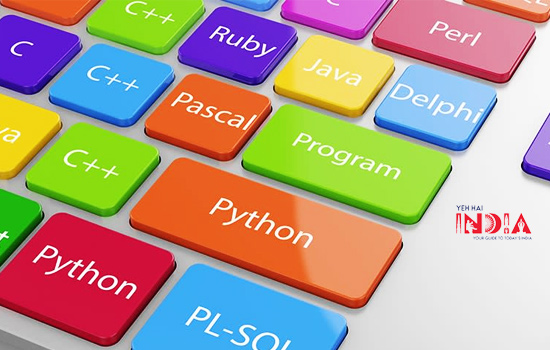The data from the Ministry of Human Resources and Development (HRD) shows that India has a total of 6,214 technical institutions. Around 2.9 million students are enrolled in these institutions, resulting in over 1.5 million Engineering and Technology graduates who complete their education each year.
But what is to notice here is, less than 20 percent of these students end up getting a job in the core sector. In fact, lack of skills has been identified as one of the major reasons for private investments not picking up in the manufacturing sector. This is resulting in a loss of manpower, as well as a loss to the economy. As the world moves towards the fourth Industrial Revolution, the need for skilled individuals is being felt.
The need of today’s time is to move towards a Skill-based education system in the country. Indian Government has realized that the need is to implement an Outcome-based education system in the technical institutes of the country.
So, is engineering dead in India?

The answer to this lies in what the 1.5 million engineers dream of each year.
A normal conversation with a graduated engineer, and an engineering aspirant, would explain how exactly the thought process changes in the four years of the course. While back when Engineering was not as common as it is now, engineers from the core subjects (Mechanical, Electrical, etc) would think of making it big in the manufacturing field/core sector, today, it has become quite common for even Mechanical Engineers taking up Digital Marketing jobs through campus placements.
Why is this the case?
Some factors that need to be considered are –
- Core Engineers often lack the skill required to get that first opportunity.
- Even if they do, the salary given to a fresher is so low, that it makes them disinterested to work.
- Dwarf Micro-small and Medium Enterprises (less than 100 employees) employ the lowest number of people.
- Bigger Manufacturing Units (>100 employees) though employ the largest, the current economic slowdown started due to the Lehman Crisis (2008) and hence decrease in overall demand due to various factors has only led to more and more layoffs as far as employees are concerned.
- Private investment has been stagnant/low (Economic Survey) which is one major reason for the decreasing number of employment, especially in the manufacturing sector.
Needless to say, it is because of the above reasons, that the share of the manufacturing sector to GDP has been stagnant at 16%, which should have been 25% in ideal conditions. So, considering things take a steep turn and somehow India’s export starts to boom (which itself requires several factors), what is the solution to all this?
The idea is simple – to emphasize on skills and outcomes of the individual, instead of focussing just on the curriculum and completion.
What is Outcome-based education?
A student-centered instruction model, Outcome based education focuses on increasing the performance of the students with the help of outcomes. It is expected that a full-swing implementation of this type of education will solve the issues related to the course-curriculum, evaluation of acquired knowledge by the student, teacher training, and learning as a whole – according to a set standard.
Innovative, indirect questions through practical exams and different assignments to each student with a strict No-plagiarism policy as followed in the Indian Institute of Management (IIMs) in India can help increase the outcome quotient of a student.
This is also expected to increase the involvement of Technical colleges and universities who can then invest time in vision, mission, and outcome-based courses. This will also ensure that –
- The students get to acquire the actual skills which may be relevant while working in the industry.
- For example, many private universities and colleges lack basic laboratories which are important for the student to attain skills.
- Classes like the use of vernier calliper which is important for Quality Control in Medium Scale Enterprises – are taught only for a day.
- A more dynamic way of assigning different assignments to each individual would mean not only would they innovate, but the blatant plagiarism that goes with ‘Engineering Assignments’ in colleges would stop.
- Students would actually understand the importance of the subjects they are studying in Engineering and focus more on understanding concepts than the current “rattofication” a day before the exam which is usually followed.
Please note that “skills” are just a subset of “outcome” based on education. Outcomes include skills, knowledge, and attitude to learning. The main focus remains on evaluating the outcomes of the program by analyzing what kind of knowledge, behavior, and skill the graduate is going to attain after the completion of the 4 years of engineering.
Thus, when the Outcome Based Education Model is applied in India, the engineering course will have predetermined sets of knowledge and skills that need to be acquired before the engineering aspirant gets his/her degree.
What are some of the factors involved to access Outcome – Based Education?
While the method of assessment is left for the institution to decide, there are some common factors and assessment tools which can be helpful to measure the outcome of a course.
This may include –
- Quality of questions asked in the mid-semester and end-semester exams – Are they relevant? Are they too tough? Are they analytical? Is the same pattern being followed since the last few years for the test or the questions change? Is the question paper plagiarized?
- Assignments – Each student is given a different assignment that involves the relevant industry exposure and not bookish knowledge to solve. A strict “No PLAGIARISM” policy is followed in IIMs.
- Project and Lab work – Fully equipped labs and mapping of the performance of the individual in each laboratory. Complete transparency in marking pattern to end ‘favoritism’ which is followed in most universities while giving practical marks.
- Final Year Project – Like the Medical field, a minimum of six months for an internship to gain relevant industry exposure is the need of the time. Currently, a one-month industrial visit in the penultimate summers before the final year is merely an obligation as a part of the subject curriculum, but it is not followed. This should involve a proper assessment of all that has been gathered as a skill by the individual through an exit process, where the skills mentioned are tested by an industrial veteran.
Conclusion
A strategic micro and macro level of assessment are at the heart of the Outcome-Based Education. While we talked in detail about taking Engineering at the center, it should be known that outcome-based education as a need of the present time is relevant for primary education as much as it is relevant to technical education.








